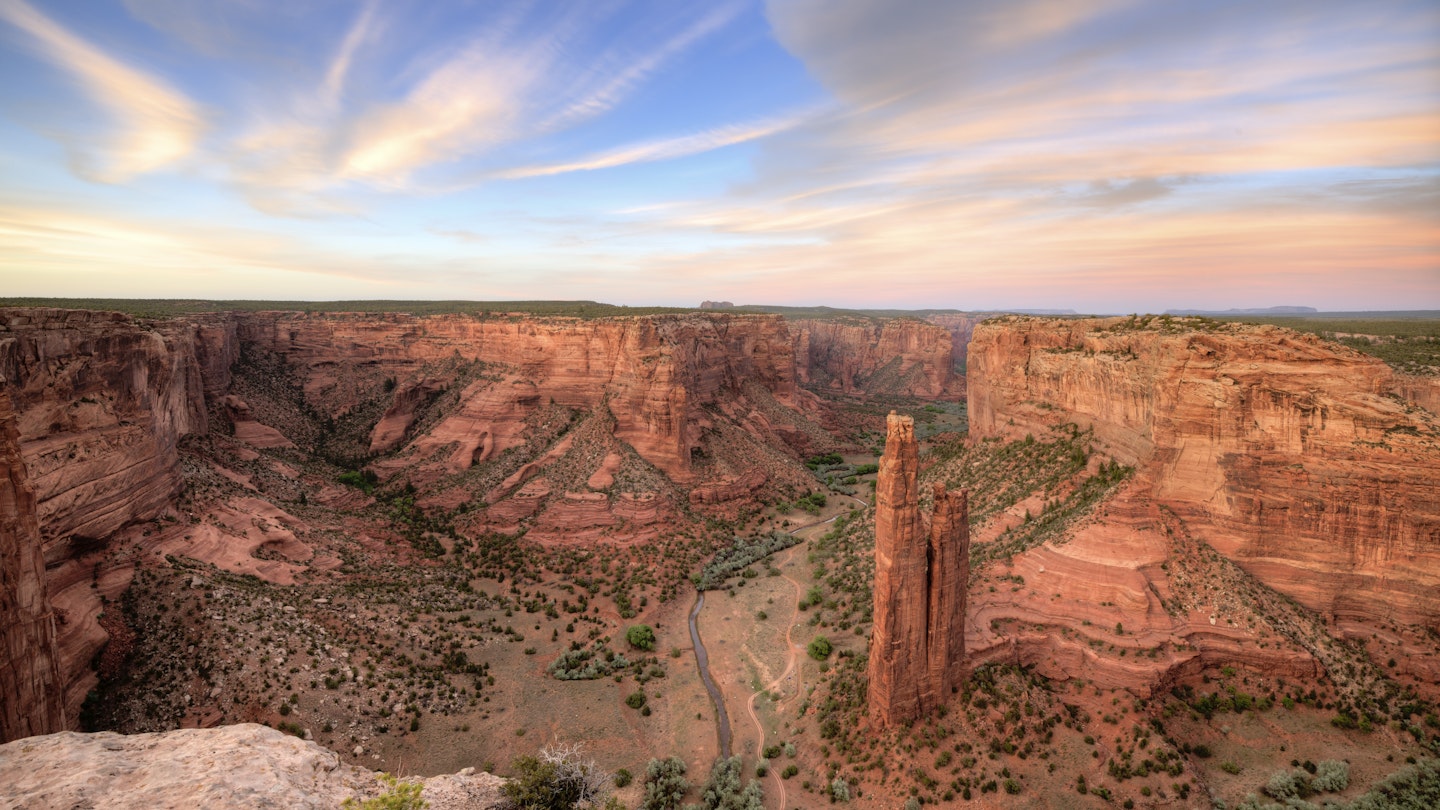Exploring Arizona’s Tribal Lands
Arizona is home to 22 sovereign tribes, each with unique governments, cultures, and customs. Many of Arizona’s historic sites and breathtaking landscapes lie on Tribal lands. Understanding and respecting local rules and traditions greatly enrich the visitor experience and ensure a memorable trip.
Visitors should be aware that many tribes have restrictions on photography and videography. It is essential to ask for permission before recording anything on Tribal lands. Additionally, public dances and ceremonies may have expectations for spectators, which might not be conveyed in advance. Observing Tribal attendees will help visitors navigate these events respectfully.
It is important to note that federal and some state laws strictly prohibit disturbing or removing artifacts, plant life, or rocks from Tribal lands. Most sacred sites remain closed to non-tribal members; however, some tribes provide guided tours, offering an extraordinary glimpse into their traditions.
While driving through Tribal lands, motorists may encounter sheep, goats, or cattle on the road, a common occurrence due to some tribes’ open range policies. Visitors are advised to stick to paved roads as dirt ones may be poorly maintained. GPS navigation may not always be reliable, and cell service can be spotty or nonexistent in remote areas. As Tribal lands can be vast, it is wise to carry extra water and snacks and to refuel whenever possible. Additionally, be prepared for unpredictable weather that can lead to flash floods, even in areas that are not currently experiencing rain.
Therefore, a road trip across Arizona provides an ideal opportunity to experience beautiful landscapes and significant sites on Tribal lands.
Tohono O’Odham Nation
The Tohono O’odham Nation, known as “the people of the desert,” is one of the largest tribes in Arizona. Their lands extend through southern Arizona and into the Mexican state of Sonora. The Cultural Center and Museum, located in Topawa off Indian Route 19, offers visitors a chance to learn about the nation’s rich culture and history.
The most renowned site in the Tohono O’odham Nation is the San Xavier del Bac Mission, situated just south of Tucson. Constructed in 1797, it is recognized as the oldest European structure in Arizona. The mission’s name, “del Bac,” translates to “place where water appears” in the Tohono O’odham language, a reference to a nearby natural spring and the Santa Cruz River.
Montezuma Castle & Montezuma Well
The Montezuma Castle National Monument and Montezuma Well are popular destinations on Arizona road trips. Few realize these sites lie within the Tribal land of the Yavapai-Apache Nation, which includes five communities in the scenic Verde Valley.
Travelers may pass the Cliff Castle Casino Hotel along the route, providing a perfect opportunity to enjoy a meal or an overnight stay while exploring the area further.
Grand Canyon West and Peach Springs
A visit to Grand Canyon West is well worth the drive, leading through the Tribal land of the Hualapai Nation. This area is famous for the Skywalk, a glass bridge that provides breathtaking views of the Grand Canyon from above.
On the way, travelers can stop at Peach Springs and visit the Cultural Center for insights into the Hualapai culture. Alternatively, consider taking an unforgettable rafting tour with the Hualapai River Runners.
Hopi Cultural Center
Traveling to the northeastern part of Arizona, visitors can explore the Tribal land of the Hopi Nation. The Hopi reside in traditional homes across three mesas, allowing visitors access only through guided tours. The Hopi Cultural Center on Second Mesa provides insights into Hopi culture, with lodging and a restaurant available for guests.
The Navajo Nation
The Navajo Nation is the largest Tribal nation in the US, and its members refer to themselves as Diné, meaning “the people.” They inhabit some of the most remote yet captivating areas of the Southwest.
The Canyon de Chelly National Monument is a must-visit destination within the land of the Diné on this Arizona journey. The visitor center offers a valuable introduction to Diné culture, alongside guided tours into the canyon. There is one self-guided trail leading to cliff dwellings at White House Ruins. Scenic stops along the rim provide excellent views, with Spider Rock Overlook delivering the most stunning vistas.
As travelers approach Monument Valley, they are greeted by magnificent sandstone formations rising from the desert floor. The Navajo Tribal Park offers guided tours, allowing visitors to experience this dramatic landscape firsthand. The visitor center and the View Hotel provide scenic panoramic views of the valley.
The Navajo National Monument features some of the most impressive Ancestral Puebloan cliff dwellings in Arizona. The largest, Betatakin, is visible from the paved Rim Trail, while visitors require a ranger-led tour to explore it up close. Additionally, guided hikes to Keet Seel, another remarkable cliff dwelling on the canyon floor, are available.
Antelope Canyon is among the most sought-after destinations in Arizona. As part of the Lake Powell Navajo Tribal Park, this stunning slot canyon can only be accessed through guided tours that take visitors to either the Upper or Lower Antelope Canyon.
Pipe Spring National Monument
Concluding this road trip, the Pipe Spring National Monument rests on the Tribal land of the Kaibab Band of Paiute people. This park pays homage to both native and pioneer life on the southwestern frontier. Its visitor center and museum feature exhibits that highlight the cultures and people who once inhabited this region.





